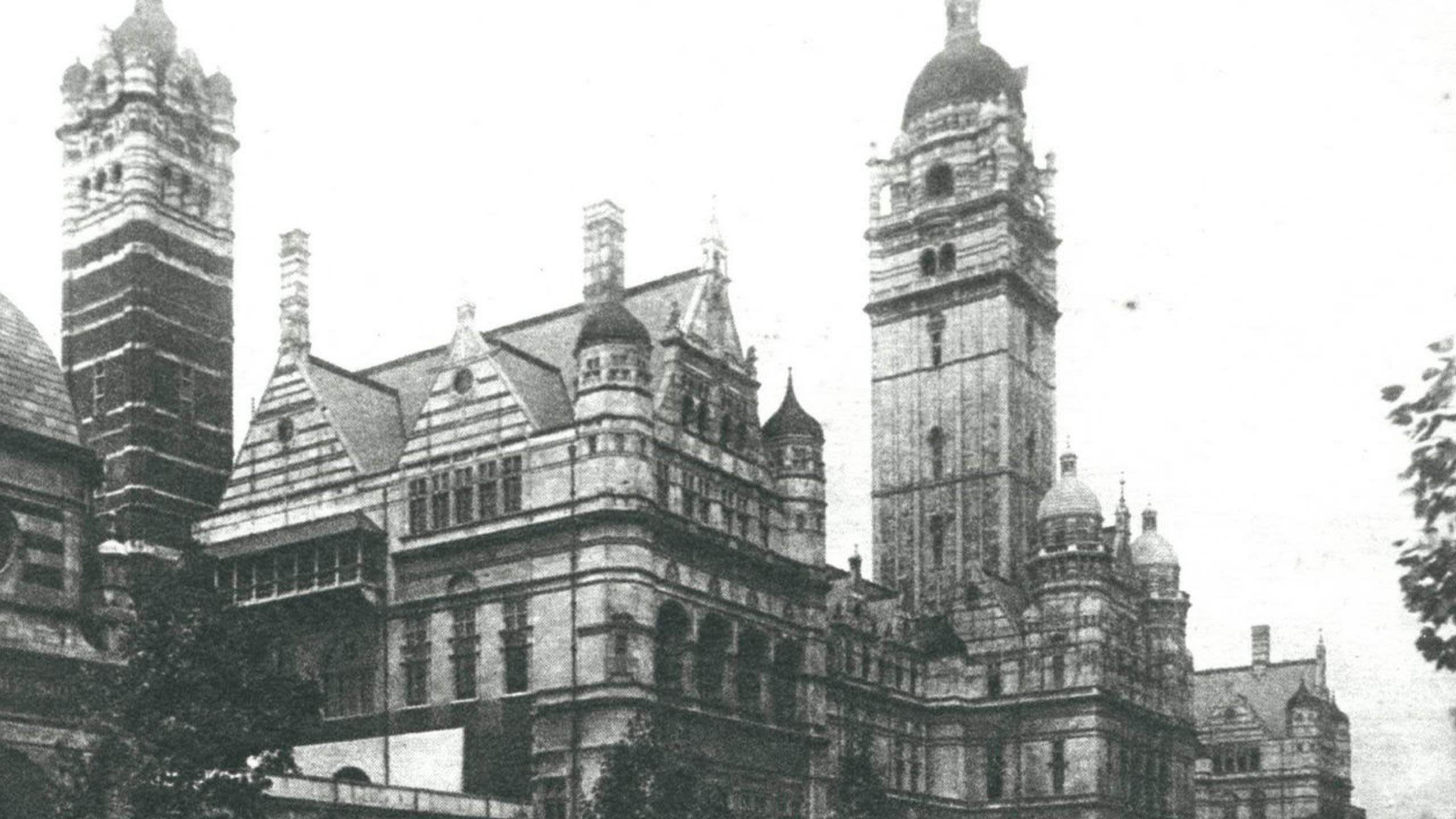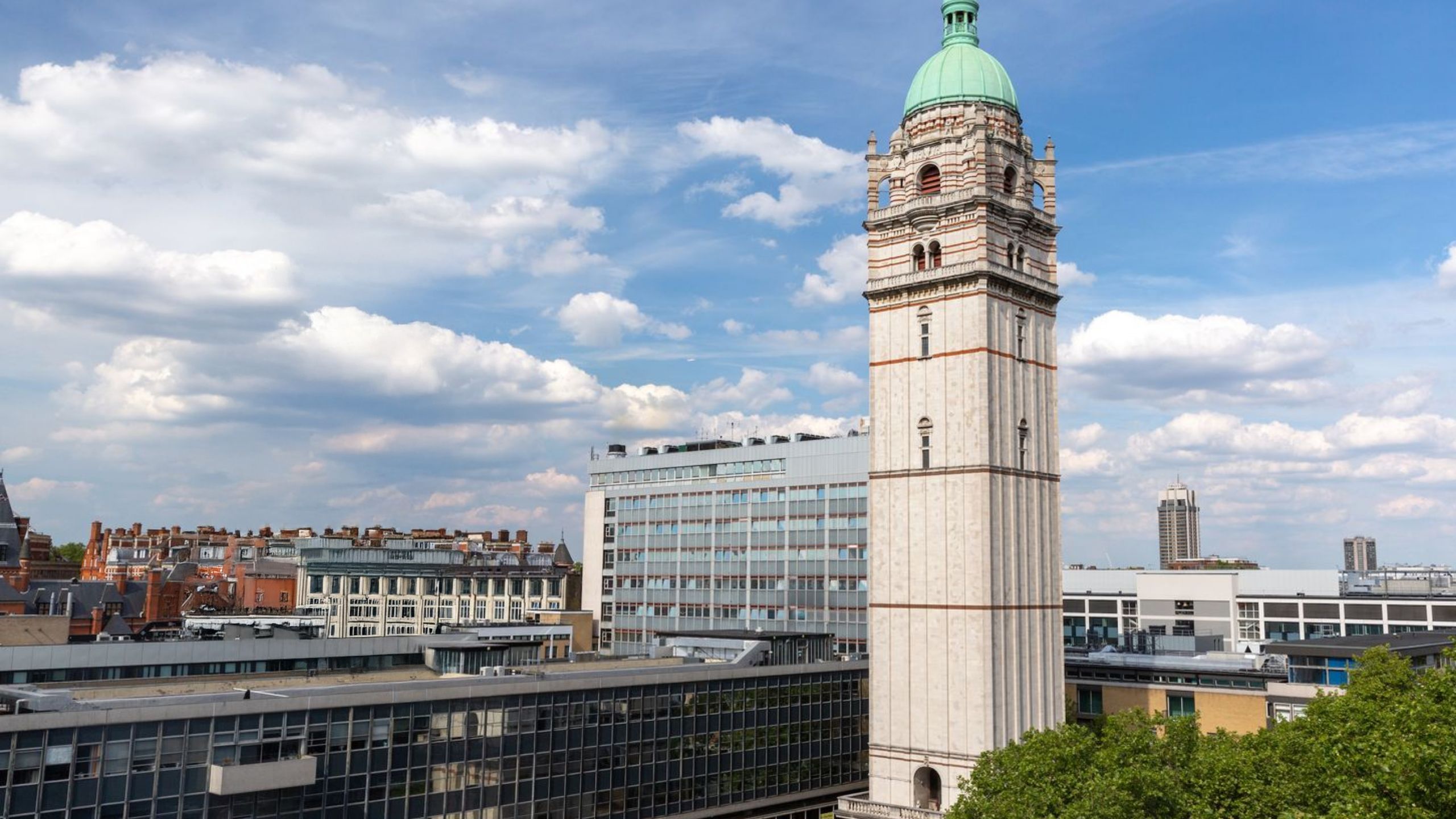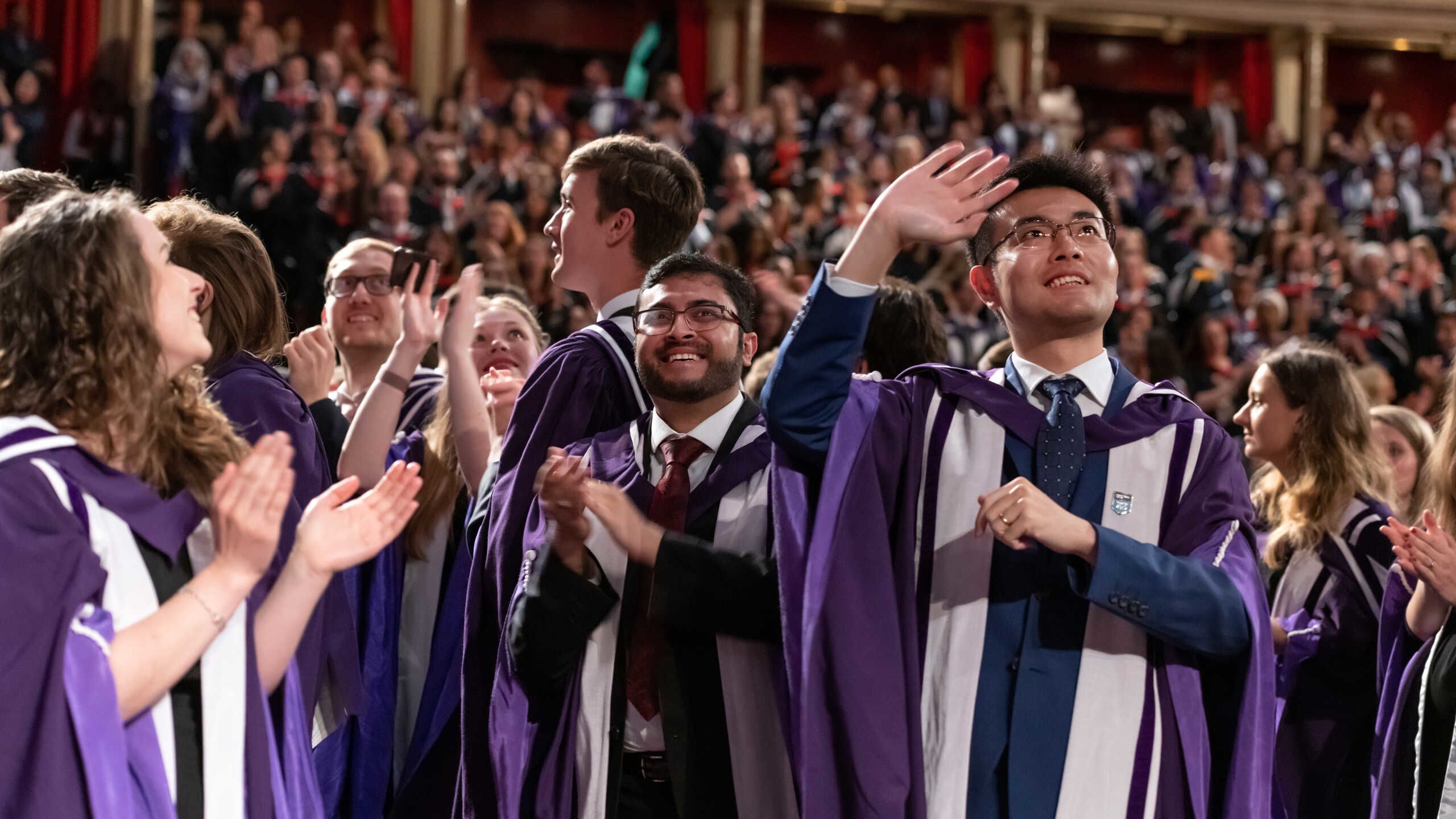About graduation and Imperial
As an Imperial graduate, you’re now part of the university’s incredible history.

Graduation traditions

The Imperial mace
The mace marks the arrival of the Provost and President during the procession. The crown parts of the head are hand-forged, and the harp, lion and book edges are gold plated in lemon gold. The stem represents human DNA or a chain of atoms in a spiral, and the stem base is engraved with the Goldsmiths Company coat of arms with an inscription reading ‘Gift of the Worshipful Company of Goldsmiths 2009’.
The Imperial mascots
Jezebel is a 1916 Dennis N type fire engine. She is one of our mascots and was gifted to Imperial in 1959 as a means of transportation for the President. First used during air raids in World War I, she is now maintained by the RCS Motor Club ready for occasional outings, including graduation days.
Read more about the Imperial mascots
Academic dress
While academic dress has its origins in medieval Europe, today it denotes the graduate’s institution and the level of degree awarded. A purple theme runs through all of Imperial’s gowns; an homage to the work of Royal College of Chemistry alumnus Sir William Henry Perkin, who invented mauveine, the world’s first synthetic purple dye, in 1856.
Graduands receiving their first degree wear black gowns and black hoods with white and purple lining.
Students from the Faculty of Engineering wear a grey collar.
Faculty of Medicine students wear a red collar.
Students from the Faculty of Natural Sciences wear a yellow collar.
Business School graduands wear a pink collar.
PhD and DSc recipients wear purple hoods and purple gowns; the sleeves of PhD gowns are also purple, while those of DSc graduands are white.
Graduands from the Centre for Higher Education Research and Scholarship, and the Centre for Languages, Culture and Communication wear a purple collar with a white stripe.
A message from the Chief Executive Officer of the Royal Albert Hall
James Ainscough OBE, CEO, Royal Albert Hall
We are delighted to welcome Imperial College London to the Royal Albert Hall for Graduation Days 2025. For over 150 years we have been bringing people together as the home of breathtaking moments and lasting memories.
A brief history of Imperial


Founded in 1907, Imperial brought together the Royal College of Science, the Royal School of Mines and the City and Guilds College to create one forward-thinking institution.
Our founding mission was ‘to be useful’. As the pioneer of penicillin, holography and fibre optics, we have certainly lived up to this ambition and, as the world has changed, so has the university.
We embraced cutting-edge science, introduced ground-breaking disciplines, such as engineering and computing, and welcomed the Imperial College School of Medicine (now the Faculty of Medicine) to further our commitment to healthcare innovation.
Imperial’s story is one of passion, dedication and the relentless pursuit of knowledge. You’re now part of the story that will inspire generations to come, as Imperial continues to unlock scientific imagination for world-changing impact.
2025 highlights

Visit our website for all the latest news and events at Imperial.
The King visits Imperial’s Centre for Injury Studies
His Majesty The King visited Imperial’s Centre for Injury Studies in February to highlight the UK’s support to injured personnel in Ukraine and hear about the vital link between research and humanitarian efforts. Teams of engineers, scientists and clinicians work together in the centre to develop new ways diagnosing, treating and rehabilitating patients following traumatic injuries.
Mayor launches London Growth Plan at Imperial
Imperial hosted the launch of a new plan to turbocharge economic growth in London. Launched on Imperial’s South Kensington Campus, the event included speeches from Imperial’s President Professor Hugh Brady, and the Mayor of London, Sir Sadiq Khan. Developed by the Mayor of London, London Councils and London & Partners, the London Growth Plan sets out a blueprint to kickstart the capital’s productivity.
Five incredible breakthroughs in brain science
From new surgical techniques and treatments to studies on neurodegenerative disease, Imperial has been involved in incredible work in brain science this year. Researchers have discovered a possible new use for Ozempic; Imperial is part of the Landmark research project to help understand Parkinson’s; experts have found a new technique for brain fluid surgery; and researchers have discovered that blood tests can detect inaccessible brain tumours and help identify the cause of brain injury in newborn babies.
Imperial and Rio Tinto launch $150m partnership
The Rio Tinto Centre for Future Materials was welcomed as ‘a major vote of confidence in the UK’ by the UK Government. Created with an investment of $150 million from Rio Tinto over the next ten years, the centre will accelerate the development of new sustainable techniques and technologies required to deliver the materials necessary for the energy transition.
Imperial recognised as top 10 global university for sustainability
The QS Sustainability Ranking for 2025 place Imperial as joint seventh in the world, joint fourth in Europe, and joint second in the UK, recognising the university’s commitment to putting sustainability at the heart of its work and playing a leading role in the global fight against climate change, biodiversity loss and pollution.
Imperial leading trials for cystic fibrosis treatment
Researchers at Imperial are leading human trials for an innovative gene therapy treatment. The inhalable medicine has the potential to improve lung disease in people with cystic fibrosis, irrespective of their mutation type. It is being tested in the UK and Europe.
Solar Orbiter team marks five years of studying the sun
Solar Orbiter is a European Space Agency decade-long mission sent to study the Sun and its effects on the solar system. An Imperial team designed and built the Orbiter’s magnetometer instrument, one of ten instruments on board this complex laboratory. This year marks five years since it launched.













